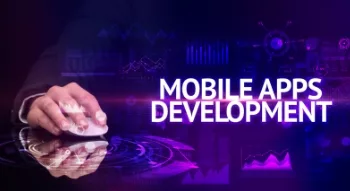A creative process is behind every new product being innovated and launched in the market. Simply speaking, if you want to rule the industry, standing out with a unique product or service is vital.
This is one of the reasons companies test your creativity when hiring. A survey tells that when CEOs were inquired about the skills they value most in people, most of them answered creativity.
However, everyone isn’t born with an exclusive creativity level, but you can surely cultivate it in yourself. So, today we are about to highlight the 5 stages of creative thinking in detail to help you amplify your creative potential.
Without further ado, let’s begin.
5 Stages of the Creative Process You Should Know About
The creative process model relies on 5 stages. These stages were coined by Graham Wallace, a social psychologist, in the book “The Art of Thoughts.” Most critical thinkers appreciate this process and believe that it bridges you to innovative ideas.
Preparation
Preparation is the first stage in the creative cycle. In this stage, you reconsider the tips and techniques in use and try to draft a new idea from it.
With preparation, it doesn’t mean producing or creating new products every time. But this stage means allowing your brain to wander and explore horizons.
It totally depends on where and how you want to explore. If you want to be niche specific, you can explore your industry.
However, if you want to look into a big horizon to discover ideas, that’s also a feasible option. Let’s say you are an entrepreneur and want to launch a product in the market to boost your revenue.
There are two approaches to working on your idea. Firstly, you can study the already launched products and innovate them, considering the pain points and feedback of your targeted audience.
The other way to do it is by surveying products and businesses from scratch and brainstorming ideas to make it happen.
Having multiple ideas and jotting them down will also be helpful to get started again – if the first idea doesn’t work out in the stages of creativity ahead.
Sit or surround yourself with a quiet environment for the best results in the preparation stage.
Incubation
Followed by preparation, incubation is the next stage of the creative process. Now, you might have sound ideas at your disposal, but they need a small leap for further process.
Once you have gathered them all, leave them for a day, week, or month since this stage might take longer than the other. Meanwhile, work on another project or wrap up the work pending on your end.
Continuous working on the ideas might not take you to the next step of illumination but fleshing it out for a while will surely.
When you brainstorm, note down the ideas, and leave them for some time, your subconscious mind starts processing them to etch a better and more practical version.
As we mentioned earlier if you have jotted down the pain points of your customers to launch a product, give it a break before critically thinking it over.
Illumination
Illumination in the creative process steps is also called the insight stage. This is the “aha’ and “Eureka” stage we’ve always been hearing about.
As one of the most important stages of the creative process, here’s when the idea bulb clicks right inside your head and navigates you to carry out the action further.
Your brain – to whom you have fed with the initial ideas – provides you with processed thoughts.
Take note that this stage can occur anytime, and the idea can pop up anytime, anywhere. 72% of people state that their ideas spark during showers. While some refer that they get the hunch during breakfast or on vacation.
For entrepreneurs intending to launch a product, as we spoke about above, creative thinkers usually get an idea clicked in a seminar. However, there’s no fixed rule, and it’s different for everybody.
Evaluation
As the name implies, evaluation is the stage of analysis of the ideas your brain has processed till now. Here you need to analyze yourself and the finalized idea to make sure it works in the long run.
Self-criticism and reflection are the general traits you’d need to reach a conclusion. With the help of self-critic, you can assess your idea and put yourself in the show of your audience to know if it’s really helpful.
For an awesome idea, ask yourself a couple of questions, including “how this product or service can be valuable for the targeted audience?”
However, if you aren’t confident enough or believe self-criticism isn’t helping you, discuss it with one or a couple of friends to figure out the practicality of your idea.
The best here would be to approach a friend expert in the specific niche. Otherwise, you might not get an expert suggestion, and the idea can go in vain.
When launching a product (as in the instance above), you can take a survey through your targeted audience. Know if your product aligns with their expectations and if they are willing to use it.
Consider the feedback your audiences provide. And move back to the initial stage of preparation and start the creative process again if the feedback isn’t satisfactory.
Verification
Verification is the last stage in the process of creativity. Now, your ideas are tested and validated, so it’s time to act and bring them into existence.
Be it a service or event, make your product or solution a reality. So your audience can use it and make the most out of it.
As discussed above, if you are planning to launch a product and your audience is satisfied with its performance and integrated features, you can now launch it.
Making it happen, however, might take some time. That will require sitting long hours on your chair, working more than eight hours a day, or staying on the ground with your team.
Conclusion
Today, we discussed these five stages of the creative process to elevate your business with unique products. Initiation of this creative process is from the preparation stage.
Next is to set aside this idea for some time so your subconscious mind can process it on its own. After a while, your brain pops with an idea on a random day or moment – which is commonly called a bulb click.
This idea is then further processed, and you need to self-criticize it. Lastly, you execute the idea or move back to the initial stage – if your idea needs to be revamped or replaced.
Also Read: How to find the most suitable Digital Marketing Agency?



